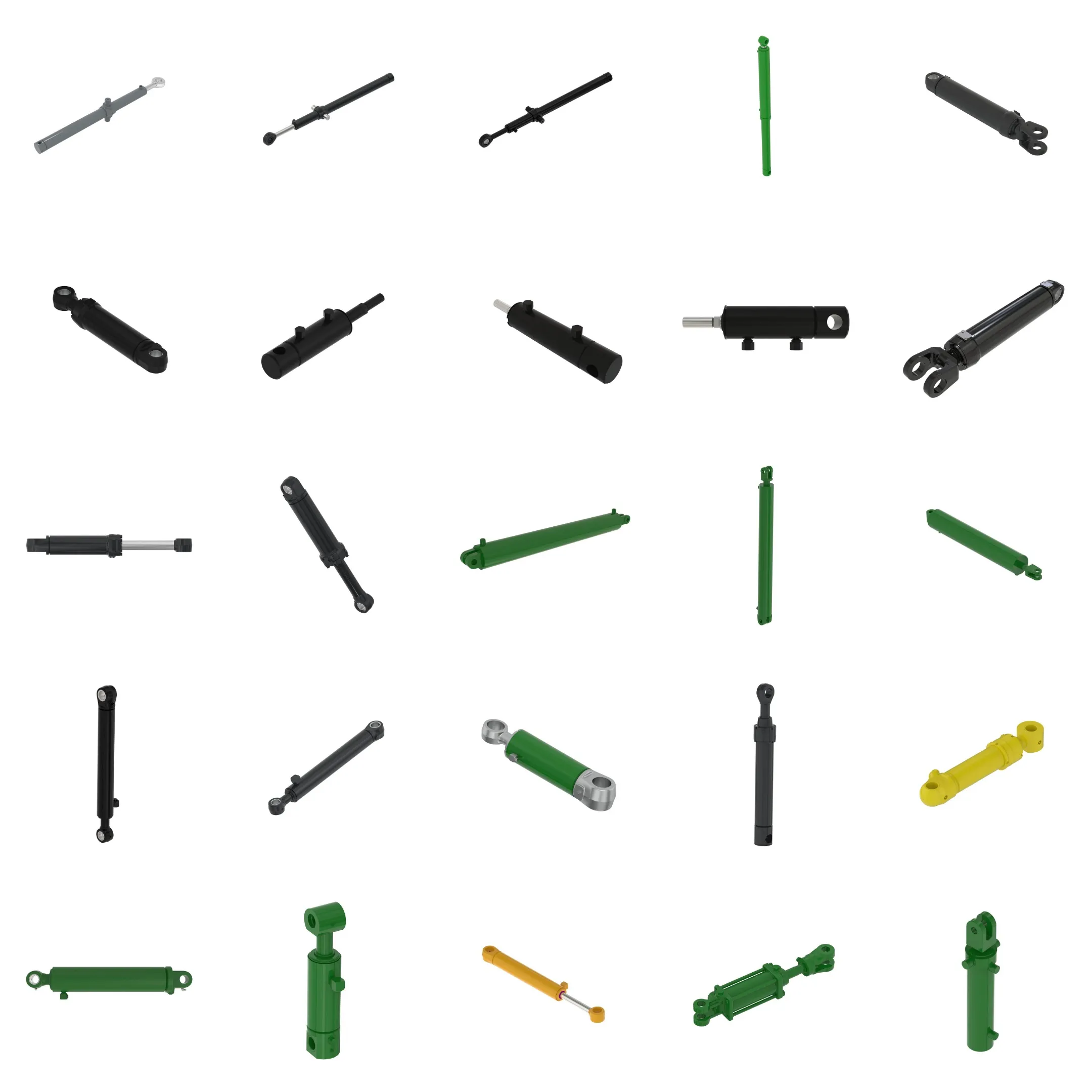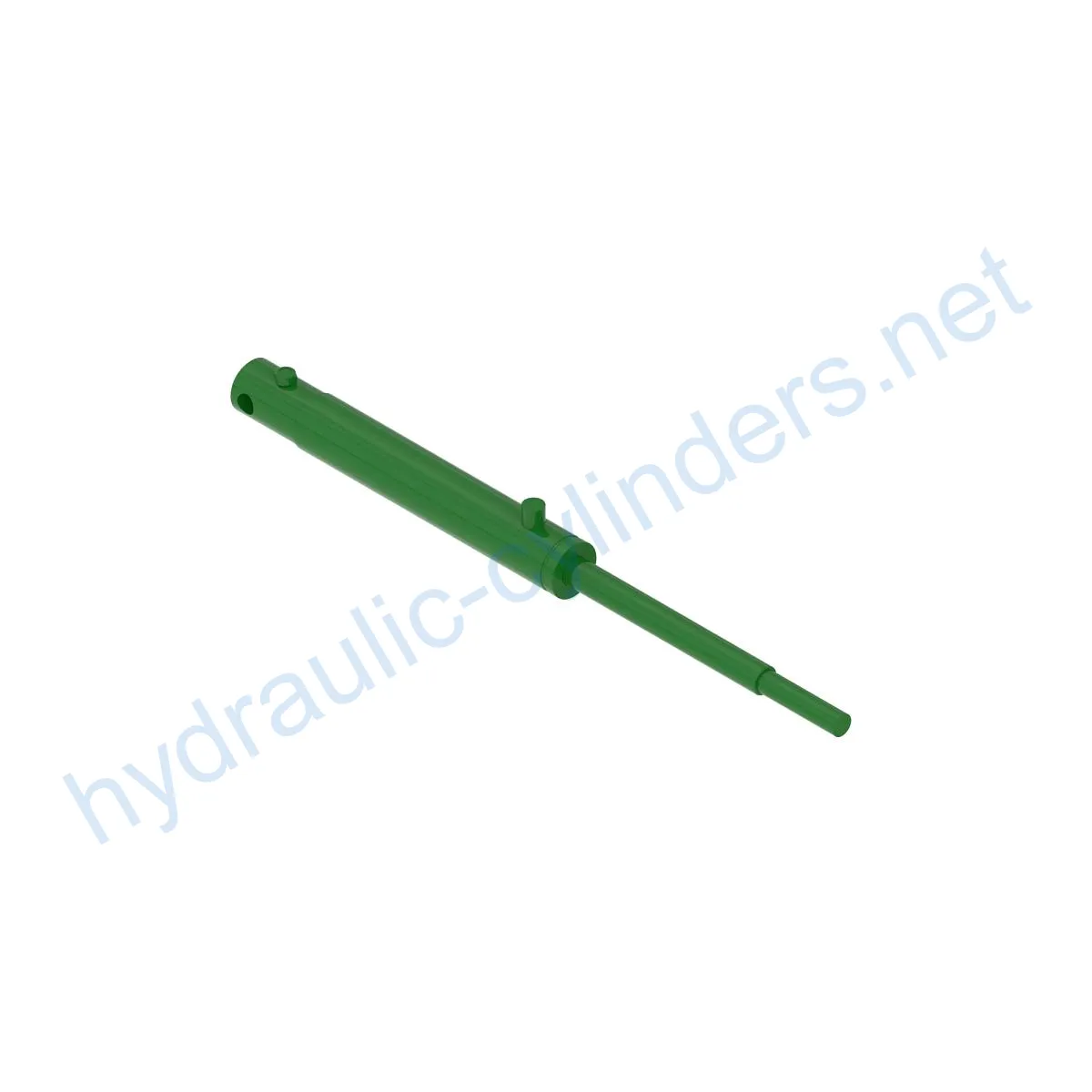Replacement Of AFH223622 Hydraulic Cylinder
Kot eden od proizvajalcev, dobaviteljev in izvoznikov hidravličnih cilindrov ponujamo hidravlične cilindre in številne druge izdelke.
Za podrobnosti se obrnite na nas.
Pošta:sales@hydraulic-cylinders.net
Proizvajalec, dobavitelj in izvoznik hidravličnih cilindrov.
Replacement Of AFH223622 Hydraulic Cylinder
The AFH223622 Hydraulic Cylinder is a vital component in various machines, providing the necessary force for hydraulic systems to operate effectively. It plays a crucial role in ensuring the smooth functioning of equipment in a wide range of applications.
Specifications
- Weight: 6.393 lb
- Height: 1.9 in
- Width: 2.8 in
- Length: 15.85 in
Compatible Models
- 450E
- 450M
- 451M
- 451R
- 461M
- 461R
- 550M
- 551M
- 561M
- 561R
Features
- Improved Equipment Performance: Replacing damaged or worn hydraulic cylinders can restore the normal operation of equipment, ensuring its performance in various applications.
- Enhanced Safety: Regularly replacing hydraulic cylinders reduces safety hazards caused by cylinder failures, ensuring the safety of operators and equipment.
- Overload Protection: New cylinder designs often incorporate better overload protection mechanisms, enhancing safety.
- Quick Installation: Modern hydraulic cylinders are designed for easy installation and replacement, reducing downtime.
- Standardized Components: Many hydraulic cylinders are standardized products, facilitating the acquisition of replacement parts in the market.
We specialize in the production of replacement hydraulic cylinders that perfectly substitute for the aforementioned models. Our products meet the highest standards and are designed to deliver exceptional performance.
Applications
- Excavators: Hydraulic cylinders in excavator arms or buckets may require replacement due to long-term usage or overload, ensuring smooth operations.
- Cranes: Crane boom hydraulic cylinders are prone to wear and tear during frequent lifting and lowering, necessitating periodic replacements for safety.
- Tractors: Front-end loader hydraulic cylinders on tractors may experience leaks or decreased performance during continuous lifting and tilting operations, requiring replacements.
- Harvesters: The hydraulic system in harvesters operates under high pressure, and cylinders may suffer fatigue damage, requiring timely replacements to maintain work efficiency.
- Automated Production Lines: Hydraulic cylinders control robotic arms and other automated equipment. Cylinder failure can disrupt production efficiency, necessitating immediate replacements.
- Die Casting Machines: Hydraulic cylinders in die casting machines may experience performance degradation in high-pressure and high-temperature environments. Regular replacements ensure product quality.
- Mining Equipment: Hydraulic cylinders are used for lifting and moving heavy loads in mining equipment. Regular inspection and replacements are necessary to avoid equipment failures in harsh working conditions.
- Bulldozers: Wear on hydraulic cylinders in bulldozer blades can lead to decreased pushing capability, requiring timely replacements to maintain operational efficiency.
Maintenance Tasks
- Regular Inspections: Periodically inspect the hydraulic cylinder for any signs of leaks, damage, or wear.
- Proper Lubrication: Apply appropriate amounts of hydraulic oil to ensure smooth operation and prevent excessive friction.
- Seal Replacements: Replace worn seals to maintain the integrity and efficiency of the hydraulic cylinder.
- Calibration Checks: Regularly check and calibrate the hydraulic cylinder to ensure accurate operation.
Proper installation, lubrication, and adjustment are vital for the optimal performance of hydraulic cylinders. During the installation process, it is important to provide precise guidance on aligning the cylinder and recommend the use of suitable mounting brackets for securing the cylinder. We offer recommended inspection, repair, and replacement procedures, as well as component replacement and rebuilding services to extend the lifespan of the hydraulic cylinder.
Safety Considerations and Environmental Factors
When using hydraulic cylinders, it is essential to prioritize safety measures. Proper handling, installation, and maintenance procedures are crucial to prevent accidents and ensure the well-being of operators and equipment. Additionally, considering environmental factors during the use of hydraulic cylinders contributes to sustainable and responsible operations.
Troubleshooting and Common Issues
- Leakage: Check for any signs of hydraulic fluid leakage and inspect seals and connections for damage.
- Slow or Inconsistent Operation: Ensure proper lubrication and check for any obstructions or restrictions in the hydraulic system.
- Excessive Noise or Vibrations: Check for loose or worn components and verify proper alignment and installation.
- Overheating: Inspect the hydraulic system for any blockages or malfunctions that may cause excessive heat generation.
- Insufficient Force or Power: Verify that the hydraulic cylinder is correctly sized and troubleshoot any potential issues in the hydraulic system.
We provide troubleshooting tips and solutions to help readers effectively diagnose and resolve problems. Furthermore, we offer preventive measures to minimize potential issues and prolong the lifespan of the hydraulic cylinder.

Design Considerations and Selection Criteria
When selecting hydraulic cylinders, several factors should be considered:
- Load-Bearing Capacity: Ensure the cylinder can handle the expected loads without compromising performance.
- Sealing and Durability: Opt for seals made of wear-resistant materials like polyurethane and nitrile rubber, and cylinders with finely treated cylinder bodies and threaded ends for enhanced durability.
- Safety: Choose cylinders with built-in safety features to prevent overload or any potential hazards.
- Maintainability: Prioritize cylinders that are easy to maintain, with readily available replacement parts and rebuild kits.
Proper sealing and lubrication are crucial for hydraulic cylinders. Utilize various sealing components such as piston seals and rod seals made from wear-resistant materials. The cylinder body and threaded ends should undergo surface treatment to improve wear resistance. Regular lubrication with the appropriate hydraulic oil is necessary to ensure smooth operation.
We also present regular inspection and proactive maintenance measures necessary for optimal performance. These measures include thorough installation guidelines, alignment instructions, and the recommendation of appropriate mounting brackets to secure the cylinder. We offer inspection, repair, and replacement procedures, as well as component replacement and rebuilding services, to enhance the longevity of the hydraulic cylinder.

About Our Company
We are a leading manufacturer and wholesale distributor of hydraulic cylinders, specializing in replacement options. Our extensive range of products has made us a trusted name in the domestic and international markets.
Professionalism
Take a Tour of Our VR Factory:
Take a tour of our VR factory with the following
Hydraulic Cylinder Application:


